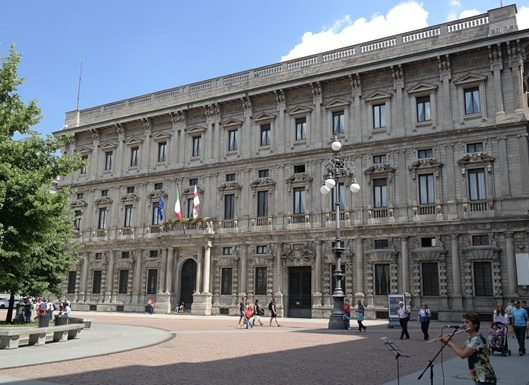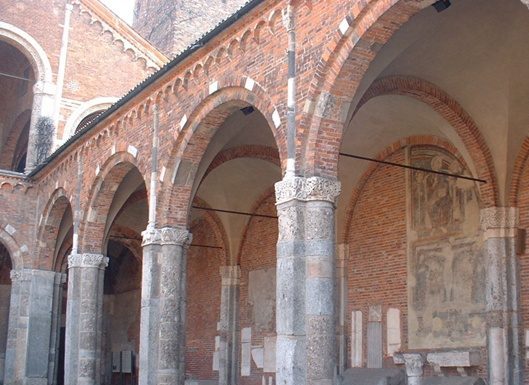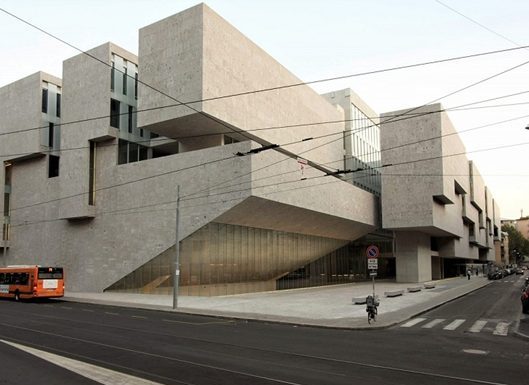CEPPO DI GRÉ
EXPLORE
2024-10-09
Ceppo di Gré is an Italian stone that is distinguished mainly by its grey colour and its homogeneous conglomerate appearance. Of Lombard origin, it has been used for centuries as a coating in numerous buildings, in Milan and beyond.
Type: MARBLE
Finishes: POLISHED, HONED
Colour: GREY BACKGROUND WITH CLASTS FROM LIGHT GREY TO DARKER GREY
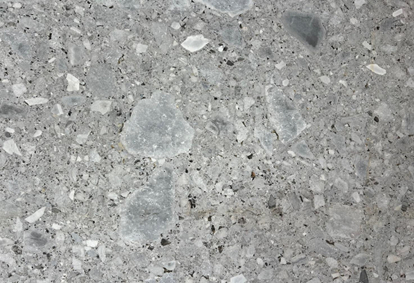
Ceppo di gré, a young stone: the geological origin
The name “ceppo” describes a wide variety of rocks, very different from each other. Therefore, the term Ceppo is usually combined with the area where it is extracted.
Today there are two Ceppo still in cultivation: Ceppo di Poltragno and Ceppo di Gré, currently the most known and used.
Geologically, the term “ceppo” refers to rocks of recent age formed by the accumulation of cemented debris and is therefore classified as “breccia“. More in detail, the geological origin of the currently active deposit of Ceppo di Grè is linked to the accumulation of numerous sediments detached from the wall of Monte Clemo and collected in a concave area. The circulation of rainwater (especially meteorite water) has consolidated the debris, facilitating the cementation of the gravel and its transformation into a resistant rock.
Ceppo di Gré: methods and extraction areas of stone
Originally, there were many quarries and Ceppo di Gré was extracted along the river Adda and partly along the banks of the river Brembo, near Bergamo. Today the only active area is located along the western coast of Lake Iseo, from Costa Volpino to the south of Castro, and at the beginning of Val Borlezza.
The extraction of Ceppo di Gré along the shore of Lake Iseo began in 1896 and took place using explosives. The material that was extracted in this area was grey, different from the brown-coloured stone previously obtained from Adda and Brembo.
In the early nineties it was decided to switch to underground mining.
Today the blocks are extracted by a diamond chain cutter and then selected and prepared for final processing.
Technical and aesthetic features
Ceppo di Gré is a grey/light blue stone, characterized by the presence of more or less large clasts with shades ranging from light grey to darker grey. Unlike its heterogeneous appearance, its chemical composition is very homogeneous and it is mainly composed of calcium carbonate and magnesium/dolomite. Secondary clays are also present.
Characterized by a good workability, the Gré Log is mainly used as material for external and internal uses, but also for the realization of solid architectural elements.
Good technical characteristics such as frost and wear resistance, wetting coefficient and compressive strength make this stone an ideal material for outdoor application, because even with a honed surface it offers excellent resistance to weather, treading and wear.
One particular note concerns the resistance of Ceppo di Gré to water: the rather high wetting coefficient would suggest a strong tendency to absorb water. This is however attributed to its macroscopic porosity, and therefore has no harmful consequences for the stone: water does not remain in the pores, so any thermal changes (resulting in ice formation) do not pose a risk of fractures or cracks, making it ideal for outdoor cladding and flooring.
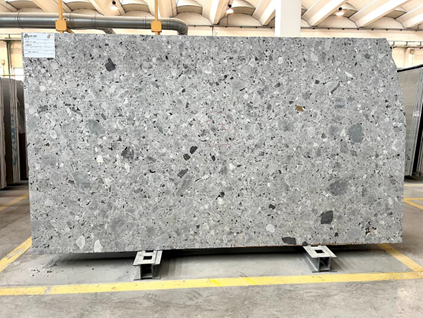
The main technical characteristics of Ceppo di Gré are:
| STANDARD | U.M. | VAL. MEDIUM |
| Coefficient of imbibition | % | 2.43 |
| Thermal expansion mm/°CE-6 | mm/°CE-6 | 9.3 |
| Apparent density | KG/m3 | 2478 |
| Wear resistance | % | 0.32 |
| Flexural resistance | Mpa | 6,3 |
| Resistance to compression | MPa | 54 |
| Compressive strength after frost cycles | Mpa | 54 |
Ceppo di Grè in architecture: ancient and contemporary examples
Since ancient times the Ceppo di Grè has been widely used in Lombardy as a building material: many artifacts of the Roman Milan are made in Ceppo di Grè, such as the walls and pillars of the churches of Sant’Ambrogio, Sant’Eustorgio and San Simpliciano, the cladding of the facades of Palazzo Marino, Palazzo Giureconsulti, Palazzo degli “Omenoni” and the portal of the Seminary.
In the ‘900 its use in the city of Milan became even more frequent in the cladding of the facades of numerous monuments and constant in the monumental cemetery.
The period between the two great wars was the period of greatest use for the Ceppo di Grè, especially in Milan and Bergamo. Its physical characteristics perfectly met the taste of the architects of Liberty and Piacentini style and we find it in many realizations of the time.
Today Ceppo di Gré is used in subways and skyscrapers all over the world, in shopping centers and conference centers (es. Congress Centre Hamburg), in museums (es. Museum Zentrum, Essen) and Hotels (es. Hotel Plaza). Particularly appreciated its use in the headquarters of the Luigi Bocconi University of Milan, awarded as building of the year 2008.
Thanks to its modern appearance and excellent workability, it is now used in public spaces as well as private homes for the construction of external and internal floors, stairs, wall coverings and pool edges.
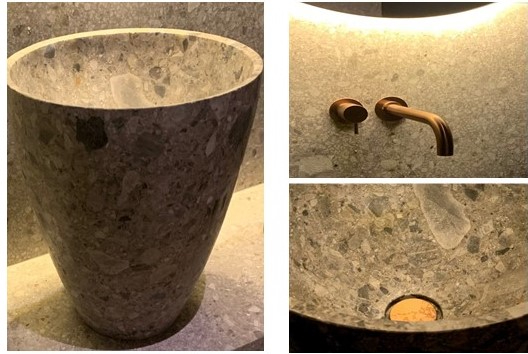
Processing of Ceppo di Gré
Ceppo di Gré is a stone with excellent workability, therefore the finishes are multiple: honing as main processing, brush hammering, sanding and brushing.
The material can be worked “open hole” to maintain a more rustic effect or for the realization of some works where it is not possible to fill it, or fill with mastic to close all the holes on the surface, making the surface smoother and more homogeneous.
Ceppo di Grè and its numerous imitations: how to choose between natural stone and artificial product
The name Ceppo di Gré is often associated with ceramics and stoneware, because they could give the same visual effect but actually they have nothing in common with the exclusive characteristics of natural stone.
Technically, the frost resistance that makes this stone particularly suitable for outdoor use is not matched in the artificial product.
In aesthetic terms, the range of solutions offered by natural stone – such as the multiple finishes, the natural split, the possibility to fill the surface – cannot be compared to its artificial imitations.
The main differences between artificial products and Ceppo di Gré (natural stone) are:
| ARTIFICIAL PRODUCTS | CEPPO DI GRE’ (NATURAL STONE) |
| Possible thicknesses 6 or 12 mm | Any thickness achievable |
| They don’t resist to frost | Frost resistance |
| Limited surfaces | Multiple finishes such as natural cleft |
| They can’t be filled | Fill with mastic or cement |
Ceppo di Grè in Alberti e Alberti
Ceppo di Grè is nowadays a stone difficult to find, also given by the limited availability of material from the quarry.
Alberti & Alberti has been working on and marketing this material for over 10 years. The history of collaborations with the most reliable suppliers allows us continuous and constant supplies of Ceppo di Grè. We also guarantee the highest quality of material thanks to the use of proprietary machinery and internal processing of the slabs.
Finally, we produce finished products of any thickness and processing, to provide the customer with an even more complete service.
Alberti & Alberti always have a wide range of Ceppo di Grè slabs in different sizes, thicknesses and finishes.
Check the availability of Ceppo di Grè in real time or contact us for the production of slabs on request.

